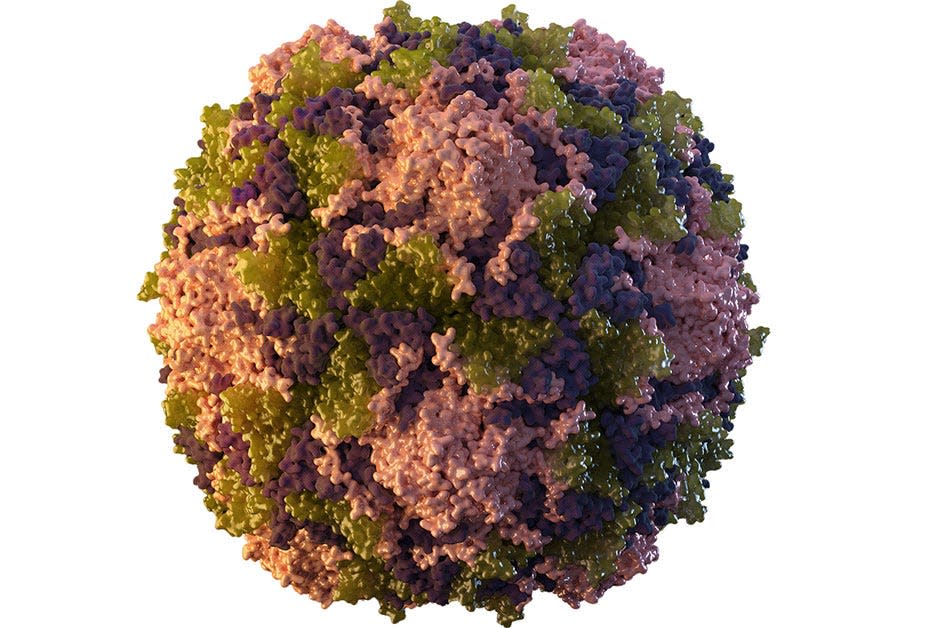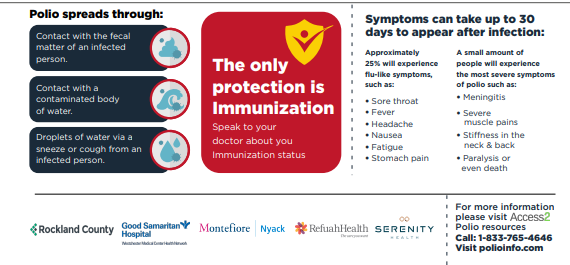Why are diseases like polio and scarlet fever back? Seacoast doctors explain, assess risks
EXETER — Having dealt with COVID-19 for the past few years, the emergence of monkeypox and diseases we thought were gone, like polio and scarlet fever, are making a disease-weary society nervous.
Seacoast medical experts say they understand the fear, particularly after three years of the COVID-19 virus, but they say it does not seem like outbreaks are imminent and they are not worried.

On Sept. 13, the CDC announced that polioviruses found in New York, both from a case of paralytic polio in an unvaccinated adult in Rockland County and in several wastewater samples from communities near the patient’s residence, meet the World Health Organization (WHO)’s criteria for circulating vaccine-derived poliovirus (cVDPV) – meaning that poliovirus continues to be transmitted in Rockland County, N.Y., and surrounding areas.
More: Can you be 'super-immune' to COVID-19? Unlikely, doctors say. Here's what is more likely.
Poliovirus has been detected in sewage samples from four New York counties, Rockland, Orange, Sullivan, and the latest, Nassau.

Per the CDC, polio, or poliomyelitis, is a disabling and potentially deadly disease. It is caused by the poliovirus, which spreads from person to person and can infect a person’s spinal cord, causing paralysis. There is no cure for polio, but it can be prevented with safe and effective vaccination.
"There have been attempts to eradicate polio worldwide, but it was never fully achieved," said Dr. David Itkin, an infectious disease doctor. "Some countries still have problems with it if there are cases where people are not immunized. This was an incredibly frightening disease at one point and when there was a vaccine, it was a no-brainer to get it. Adults who had the vaccine need not be worried."

Polio was considered eradicated in the U.S. in the 1970s, said Dr. Evangeline Thibodeau, an infectious disease doctor at York Hospital.
"We see isolated cases of people returning from other countries," she said. "That's probably how the New York case was contracted. We give people travel boosters if they are planning to visit a country where polio still circulates."
Dr. Apara Dave, an infectious disease doctor at Exeter Hospital, said people who have received a polio vaccination as a child should be be safe enough.

"The initial case found in Rockland, N.Y., which is north of Manhattan was in an unvaccinated person," said Dave. "The area has a lower than average vaccination rate and they are trying to address that now. If people are up to date on their childhood immunizations that would include polio. At this point, there is no recommendation to get any type of booster."
Last week New York Gov. Kathy Hochul declared a state of emergency, hoping to boost vaccination rates.
More: Yes, you can get 'Flurona,' the flu and COVID-19 at the same time
"The bottom line is if a person is unvaccinated, they are at risk," said Thibodeau. "Right now that means especially for people living in the New York areas where it has been found to be circulating in the water supply. If one person has this, there will probably be more in the area. Get a booster if you are not sure, but if mom got all your immunizations, you are likely OK."
What about scarlet fever?
Scarlet fever, a disease more easily associated with Victorian times, has also resurfaced lately. The CDC says a bacteria called group A Streptococcus (group A strep) causes scarlet fever. The bacteria sometimes makes a poison (toxin), which causes a rash — the “scarlet” of scarlet fever.
"I would not really call it a resurgence," said Itkin. "It has always been around. Strep strains, which this is one of, tend to be cyclical. They come and go, and sporadic cases will occur. It can be hard to diagnose as certain other conditions like Lyme disease have common attributes."
The disease used to be much more serious. In the past, it could cause life-threatening conditions and have long-reaching impacts on the heart. Today, a course of antibiotics is usually enough to treat the ailment.
More: 'Risk is very low.' Doctors say monkeypox in NH is concerning, but not cause for panic
Thibodeau said group A strep throat is the known cause of the bacteria that can move into scarlet fever.
"Some people develop the rash," she said. "It may be an autoimmune reaction. There are a broad range of symptoms, including fever. Scarlet fever today is much more common in kids, but adults can get it."
"Scarlet fever is still around, but generally seen in pediatric patients," said Dave. "We treat strep and scarlet fever with antibiotics and let it run its course mostly, What we want to prevent is rheumatic fever, still a much more serious disease."
This article originally appeared on Fosters Daily Democrat: Why are polio and scarlet fever back? Seacoast doctors explain

